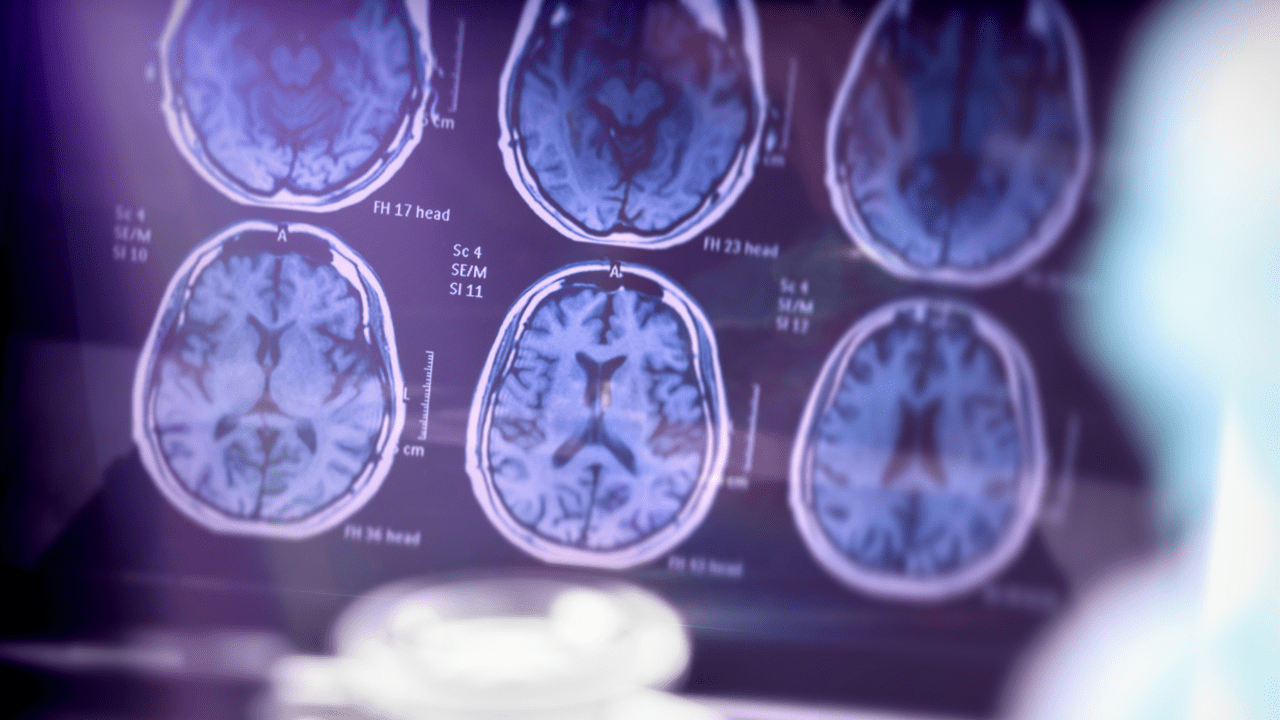APOE Gene in Alzheimer’s Disease
by Vanita Dahia
Are you at risk for develping Alzheimer’s Disese?
Forgetful, brain fog, poor recall?
Now you can determine if you are at risk of Alzheimer’s Disease with a simple gene test!
Senile dementia and Alzheimer’s Disease (AD)are considered the greatest medical threats of the twenty-first century which manifests as cognition decline, neuro-immunological conditions and neuroinflammation. Brain neurotransmission pathways become impaired due to mechanisms of deposition of amyloid β (Aβ) and hyper-phosphorylated tau tangles (neurofibrillary tangles) in the brain.
The types and degrees of Alzheimer’s disease (AD) can be elucidated with identification of ApoE gene and differentiation of its alles. Apolipoprotein E4 (apoE4) is the most prevalent genetic risk factor of AD.
What does ApoE gene do?
ApoE is a protein which is a component of lipoproteins. Lipoproteins perform as a shuttle transporting cholesterol and triglycerides around the body. More than half of Alzheimer’s Disease patients have APOE gene mutation.
ApoE protein is synthesized primary in the liver, it is also produced in the brain.
Major roles of ApoE in the brain, similar to the rest of the body, is related to lipid transport and cholesterol homeostasis. In plasma, ApoE binds to LDL receptor and LDL-related receptor protein (LRP). (1)
Isoforms of ApoE2, 3 and 4influence binding and clearance or aggregation of B-amyloid fibrils.
Factors that influence risk for AD and modify predictive value of ApoE include age, race, CVD risk factors, lipid levels, blood pressure, diabetes and lifestyle.
The link between apoE4 and AD is more pronounced in female than in male APOE4 carriers, suggesting that specific sex-related hormones, or the lack thereof, may play a role in mediating the pathological effects of apoE4.(2)
Unpacking APOE Isoforms
Three polymorphic forms of APOE, namely APOE2, APOE3, and APOE4 exist, however, carriers of APOE4 are more likely to develop AD.
ApoE2 is ‘protective’ against AD relative to APOE3 and APOE4 carriers. APOE2 is the rarest form, found in 5-10% of people, and is associated with reduced risk of Alzheimer’s.
APOE e2/e2 genotypes are at a higher risk of premature vascular disease. 1 in 50 people with e2/e2 will ever manifest vascular disease. If symptoms are present, e2/e2 may be diagnostic of Type III hyper-lipoproteinaemia. People with the APOE e2 allele tend to have lower LDL-C levels but elevated triglycerides or develop a rare inherited disorder that causes fatty yellowish deposits on the skin called xanthomas.
ApoE3, found in about 70% of the population, is the most common variant and is considered neutral. APOE e3/e3 is the most common genotype.
ApoE E4 (e4/e4 and e4/e3) is found in 25 per cent of the population and is associated with higher LDL-C (“bad cholesterol”) and an increased risk of atherosclerosis.
ApoE4 genotype independently predicts dementia risk, 2 to 3-fold increase with one E4 alles ( heterozygote carrier) and up to 12-fold with two ApoE4/4. ApoE4 is a significant risk factor for cerebral ischemia(3), with a three-fold increase over ApoE3. ApoE4, found in 10–15% of the population, is associated with a greater risk.(4)
Do you have the same APOE gene as your parent?
The ApoE gene differs from person to person. Common versions of ApoE, namely E2, E3 and E4 exists which result in very small differences in the ApoE protein.
Because you inherit two APOE genes from both parents, you may have one of 6 combinations of or genotypes of APpoE with percentage of prevalence:
E2/E2 (1%)
E2/E3 (11%)
E2/E4 (2%)
E3/E3 (61%)
E3/E4 (23%)
E4/E4 (2%)
People with E2/E2 have the lowest overall risk for Alzheimer’s and those with E4/E4 have the highest risk. The other combinations of ApoE—E2/E3, E2/E4, E3/E3 and E3/E4—fall in between. E3/E4 or E4/E4 combination is associated with on average a 30-40% increased risk of heart disease relative to the common E3/E3 genotype.
E3/E4 or E2/E4 combination may increase your risk of Alzheimer’s disease 3-5 fold, while an E4/E4 genotype appears to be associated with an increased risk of greater than 5 fold.
E2/E3 or E2/E2 combination may reduce your risk of Alzheimer’s disease by up to 50%.
ApoE Driven Mechanisms
ApoE gene functions in one of many mechanisms in the brain.
Aβ metabolism
Aβ deposition in AD patients is more abundant in apoE4 carriers. APOE-AB complexes are cleared less efficiently, leading to more deposition of amyloid plaques, neurone loss and eventually dementia.
Tau Phosphorylation
The ratio between phosphorylated and total tau might serve as a biomarker of AD. (5)
Transactive response DNA-binding protein 43 (TDP-43)
TDP-43 is present in the brain of 65–80% of AD patients.(6)
Lipid metabolism
ApoE4 is associated with disruption of the BBB and with phospholipid and cholesterol dysregulation.(7)
Mitochondrial function
metabolic alterations resulting from mitochondrial dysfunction occur in AD and are accentuated in APOE4 carriers.(8)
Neuroinflammation
ApoE plays a role in the innate immune response by activating microglia and complement proteins with brain AD lesions.(9) Vascular integrity Cerebrovascular changes such as disruption of microvascular integrity and reduced cerebral blood flow in addition to small vessel arteriosclerosis and amyloid angiopathy are greater in ApoE4 carriers.(10)
Insulin and VEGF signalling
ApoE4 impairs neuronal insulin signalling and insulin receptor trafficking.
Synaptic plasticity
ApoE isoforms differentially regulate synaptic plasticity and repair. (11)
Test for Memory Loss, Alzheimer’s, Dementia, Cognition Decline
ApoE genotyping can be measured in serum or buccal swab samples to evaluate a DNA to determine what combination of ApoE forms (genotype) is present.
Management of Alzheimer’s Disease
Management of Alzheimer’s Disease and dementia has been well published and studied in “The end of Alzheimers Disease” by Dr Dale Bredeson.(12) The Bredesen laboratory studies basic mechanisms underlying the neurodegenerative process, and the translation of this knowledge into effective therapeutics for Alzheimer’s disease and other similar conditions. Bredesen believes that cognitive decline is a metabolically driven process with multiple causes. His research has led to the publication of over 200 research papers and has made him an internationally recognised expert in the field of Alzheimer’s and neurodegenerative processes.
The research and development of prescription medication and natural supplements is growing in the field of cognition decline.
At present there are no treatments available which will completely abolish your risk of developing heart disease or dementia in the long term. However, there is good evidence that dietary modification, stopping smoking and cholesterol-lowering statin drugs will reduce the risk of heart disease, and these measures are particularly important in high-risk individuals. Similar measures may be effective in reducing the risk of developing dementia but the evidence for this is not strong at present. However, this is an active research area, and it is likely that preventative measures will emerge in the near future, and it is clearly important that high-risk individuals take advantage of these.
Keeping physically active and not being overweight are also going to help reduce everyone’s risk of heart disease.
Keep an eye on detailed management of AD. Although phramaceutical medications are limited in their benefits, many powerful herbs and brain stimulant nutritional medications have shown promise in management of AD and potential decline in amyloid plaque formation.
See Boosting BDNF in Alzheimer’s Disease article for natural strategies to manage cognition decline and naturally build brain derived neurotropic factor.
Types of Alzheimer’s Disease
Alzheimer’s disease is not caused by a single factor, rather there are multiple factors that support synaptic loss and neurodegeneration. Treatment, therefore, needs to address these many factors.
Beta-amyloid is produced in response to major metabolic and toxic insults.
There are three types of Alzheimer’s disease, with different metabolic drivers:
Type 1 – Inflammatory
Inflammatory (leaky gut, neuro-inflammation, glycation etc.). – Inflammatory markers are elevated in the brains of those with Alzheimer’s disease and there are several inflammation-promoting genes associated with this condition. Inflammatory mediators, specifically nuclear factor kappa-B (NF-ƙB) and tumour necrosis factor alpha (TNF-α), increase beta-amyloid plaque production and reduce its clearance, respectively.
Type 2 – Atrophic
Withdrawal of trophic support (vitamin D, thyroid hormones, sex hormones etc.). Insulin resistance, high homocysteine and loss of hormonal support, for example low testosterone in men or early menopause or oophorectomy in women, can lead to a reduction of neural plasticity leading to Alzheimer’s pathology
Type 3 – Toxic
Toxic (exposure to heavy metals, mycotoxins, endotoxins, Lyme disease etc.). Exposure to mycotoxins or mould exposure leads to symptoms associated with complex chronic inflammatory response syndrome (CIRS). The majority of patients that present with CIRS have both a genetic susceptibility (HLA-DR/DQ haplotypes) and exposure, often through water damaged buildings. While it can be involved in Alzheimer’s disease development, many with CIRS will not develop this condition.
ApoE4 is proinflammatory and an established risk factor for Alzheimer’s disease and other chronic conditions such as cardiovascular disease.
Dr Bredesen uses testing to establish Alzheimer’s disease type. Testing priorities include ApoE4, albumin: globulin ratio, vitamin D, hs-CRP and fasting insulin.
References:
- McCarron MO, Delong D, Alberts MJ. APOE genotype as a risk factor for ischemic cerebrovascular disease: a meta-analysis. Neurol. 1999;53(6):1308–11.
- Ungar L, Altmann A, Greicius MD. Apolipoprotein E, gender, and Alzheimer’s disease: an overlooked, but potent and promising interaction. Brain Imaging Behav. 2014;8(2):262–73.
- Schneider JA, Bienias JL, Wilson RS, et al. The apolipoprotein E epsilon 4 allele increases the odds of chronic cerebral infarction [corrected] detected at autopsy in older persons. Stroke. 2005;36(5):954–9.
- https://www.thelancet.com/journals/laneur/article/PIIS1474-4422(10)70325-2/fulltext
- Koch G, Di Lorenzo F, Loizzo S, et al. CSF tau is associated with impaired cortical plasticity, cognitive decline and astrocyte survival only in APOE4-positive Alzheimer’s disease. Sci Rep. 2017;7(1):13728.
- Wennberg AM, Tosakulwong N, Lesnick TG, et al. Association of apolipoprotein E ε4 with transactive response DNA-binding protein 43. JAMA Neurol. 2018;75(11):1347–54
- https://bmcmedicine.biomedcentral.com/articles/10.1186/s12916-019-1299-4#ref-CR88
- https://bmcmedicine.biomedcentral.com/articles/10.1186/s12916-019-1299-4#ref-CR105
- https://bmcmedicine.biomedcentral.com/articles/10.1186/s12916-019-1299-4#ref-CR112
- Mielke MM, Leoutsakos J-M, Tschanz JT, et al. Interaction between vascular factors and the APOE ε4 allele in predicting rate of progression in Alzheimer’s disease. J Alzheimers Dis. 2011;26(1):127–34.
- Nuriel T, Peng KY, Ashok A, et al. The endosomal-lysosomal pathway is dysregulated by APOE4 expression in vivo. Front Neurosci. 2017;11:702.
- Bredesen DE. Reversal of cognitive decline: a novel therapeutic program. Aging (Albany NY). 2014 Sep;6(9):707-17. Available from URL: www.ncbi.nlm.nih.gov/pubmed/25324467






